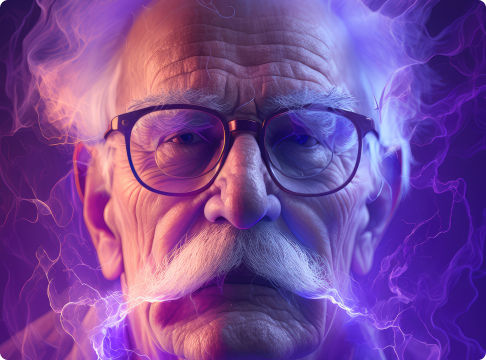Dive deep into the fascinating world of Dream Symbolism as we explore Carl Jung's theory of archetypes.

Have you ever woken up from a vivid dream and wondered what it could possibly mean? Dream symbolism has sparked curiosity and speculation for thousands of years, with interpretations ranging from divine messages to random brain activity during sleep. Yet, one psychologist decided to dig deeper.
Carl Jung ventured into the realm of dream symbolism, connecting it with our subconscious mind. His revolutionary theories, such as the concept of archetypes, provide a unique lens to view and understand our dreams. Let's embark on this fascinating journey through Jung's theory.
Before we dive into the depths of dream symbolism, let's first familiarize ourselves with a key term — Archetypes! As proposed by Jung, dream archetypes refer to universal symbols or themes that echo throughout different cultures and epochs. These include figures like the Hero, the Mother, the Trickster, and the Shadow, to name a few.
Imagine yourself dreaming about a powerful queen. According to Jung, this queen is not just a random character. She represents the 'Mother' archetype, symbolizing nurturing, authority, or creativity, depending on your personal experiences and emotions tied to the concept of a queen or mother.
Archetypes in dreams bridge our personal unconscious with the collective unconscious, a reservoir of shared symbols and experiences across humanity. So, when you dream of a snake, it reflects not only your personal associations but also taps into age-old perceptions of snakes symbolizing danger, transformation, or healing.
The following are some of the most common archetypes found in dreams:
Dreams speak to us in a language of symbols. They converse through images, metaphors, and stories, bypassing the logic and structure of words. When we start interpreting these symbols, we can unlock insights into our deepest fears, wishes, conflicts, and potential.
However, understanding dream symbols isn't about applying rigid definitions from a dream dictionary. Each symbol can hold multiple meanings, influenced by the dreamer's personal experiences, emotions, and cultural background.
Consider dreaming about a dog. For a dog lover, it might symbolize companionship or loyalty. But for someone who has experienced a dog attack, the same symbol could evoke fear or threat.
Jungian psychology offers a fresh angle to dream analysis. It views dreams as more than mere neural sparks during sleep but as meaningful expressions of our subconscious mind. Jung believed dreams to be the psyche's attempt to restore balance and attain wholeness through a process he termed 'individuation.'
Simply put, the link between Jungian Psychology and dreams revolves around identifying the archetypal symbols and delving into their personal and universal connotations. It also entails understanding the dynamics between different archetypes, like the Ego (our conscious self) and the Shadow (the suppressed parts of our self).
Psychoanalysis of dreams, as envisioned by Jung, goes beyond merely decoding symbols. It transforms into an introspective journey, confronting our shadows, integrating our fragmented selves, and realizing our innate potential.
By paying heed to our dreams and their symbols, we can decode our subconscious mind's mysteries and attain profound self-awareness. In essence, understanding dream symbolism is a powerful tool for personal evolution and self-discovery.
In our quest to understand dream symbols and their meanings, technology is playing a pivotal role. Enter SeventhSIGHT — a revolutionary platform that uses patented Machine Learning Artificial Intelligence to analyze the meaning of your dreams.
SeventhSIGHT delves deep into your subconscious mind, interpreting the intricate web of symbols and narratives in your dreams. By combining the principles of dream analysis with cutting-edge AI technology, it provides powerful insights into your daily life.

Imagine having your personal dream interpreter available at your fingertips, ready to decode the mysteries of your subconscious mind anytime, anywhere. That's precisely what SeventhSIGHT offers. It's like having Carl Jung's theories and techniques, powered by advanced AI, to help you make sense of your dream world.
Dreams mirror your subconscious thoughts, feelings, and experiences. They can reveal your hidden fears, desires, internal conflicts, and untapped potential. Each dream symbol carries personal and universal meanings.
Yes, as per Carl Jung's theory, there exist universal symbols or archetypes in dreams that resonate with our collective unconscious. However, each symbol can also carry unique meanings based on your personal experiences and cultural context.
Recurrent dreams, those evoking intense emotions, or dreams featuring vivid symbols should not be overlooked. They might indicate significant issues or opportunities in your life that require your attention.
Indeed, dreams can be viewed as messages from your subconscious mind, reflecting your inner thoughts, feelings, and experiences. They can offer valuable insights and guidance if interpreted correctly.
This belief stems from cultural superstitions or personal preferences. However, sharing dreams can often help gain insights and understanding. With that said, you do need to make sure that you only share them in a safe, respectful, and confidential setting.